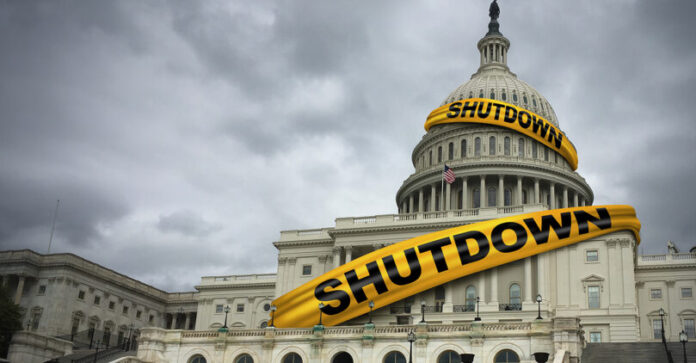
By Stacy M. Brown, NNPA Newswire Senior National Correspondent
After a six-week summer recess, lawmakers return to the Capitol on Monday with a looming crisis: preventing a government shutdown. They have just three weeks to act before federal funding runs out on September 30, and the stakes couldn’t be higher. The twice impeached and 34 times convicted former President Donald Trump has urged Republicans to embrace a shutdown unless his demands are met, putting millions of jobs and essential services at risk just weeks ahead of the 2024 presidential election.
The prospect of a shutdown would close federal agencies and national parks and curtail essential public services while furloughing millions of federal workers. The presidential race overshadows this impending crisis, as Congress will break again at the end of the month, not returning until after the election. Before leaving in July, the political landscape shifted when President Joe Biden exited the presidential race, positioning Vice President Kamala Harris as the new Democratic standard bearer. In the campaign’s final weeks, Republicans under Trump are preparing to change their strategy against Harris.
At the heart of Congress’s immediate challenge is securing a funding bill to keep the government operational. With an unlikely complete funding agreement, lawmakers are looking for a stopgap measure. But even that has become a political minefield. Under pressure from Trump and right-wing factions, the Republican-led House proposed a stopgap bill that would extend funding through March 28, 2025. However, it comes with a controversial addition—the SAVE Act, a GOP-backed measure that would overhaul national voting laws by requiring proof of citizenship to vote. Democrats have vehemently opposed the act, arguing it would disenfranchise voters by making it harder for eligible Americans to access required documents like passports or birth certificates.
Beyond the political gamesmanship, the consequences of a shutdown would hit home in Washington, D.C., Maryland, and Virginia, where federal workers and government operations are crucial to local economies. National landmarks like the Smithsonian Museums and the National Zoo may remain open temporarily with prior-year funding, but there is uncertainty about other attractions like the National Mall’s memorials.
The economic impact could be severe in Maryland, home to over 240,000 federal worker households. State officials are preparing to use local funds to offset the disruption, but workers commuting to Washington, D.C., or Northern Virginia may be furloughed.
Virginia would bear the brunt of the shutdown, with its substantial federal civilian and military workforce. The state’s economy is deeply intertwined with federal spending, particularly in regions like Hampton Roads, home to a significant number of active-duty military personnel. The shutdown could jeopardize essential programs, including the Special Supplemental Nutrition Program for Women, Infants, and Children (WIC), and affect operations at Virginia’s 22 national parks.
The ripple effects would extend to the Washington, D.C., Metro system, which relies heavily on federal workers for ridership. With the Metro system already facing challenges in recovering from pandemic-related drops in usage, a shutdown could be another blow.
“There’s no question that this is not a good thing for the country, but it’s certainly not a good thing for Metro specifically,” Randy Clarke, Metro’s general manager, said during a recent interview. “And the timing is really challenging because ridership is really starting to grow back. So, you know, we’re going to be watching this very closely, and we’re hoping that if it happens, it’s very short.”


